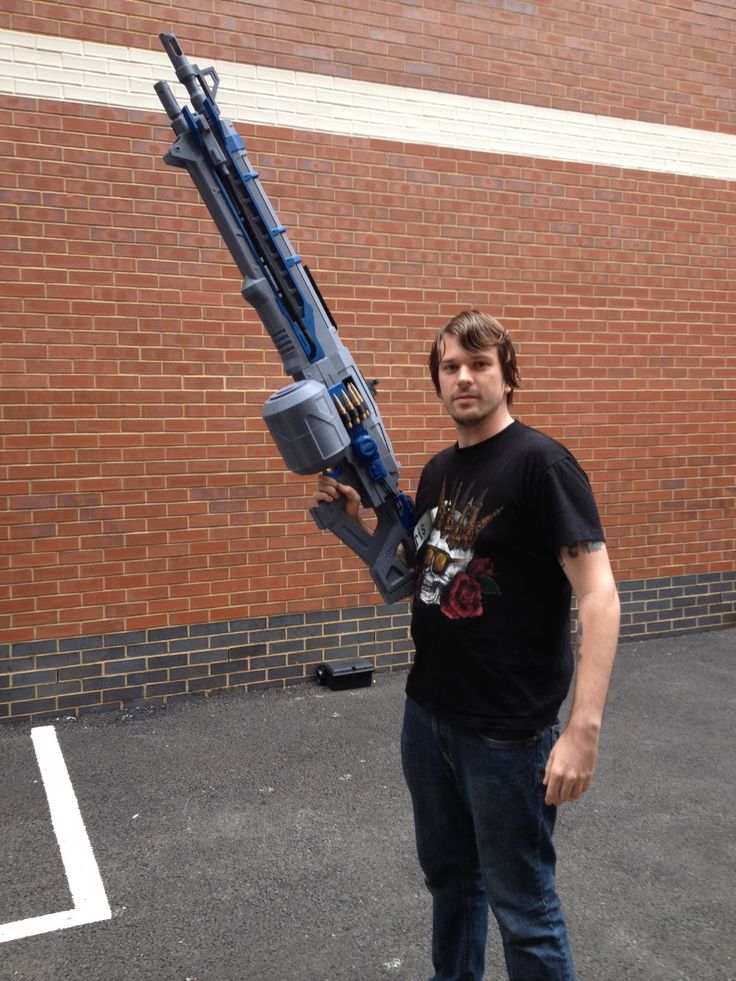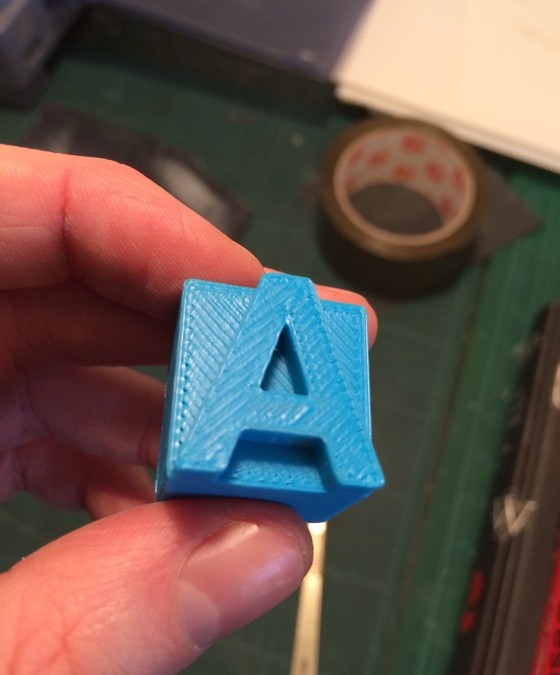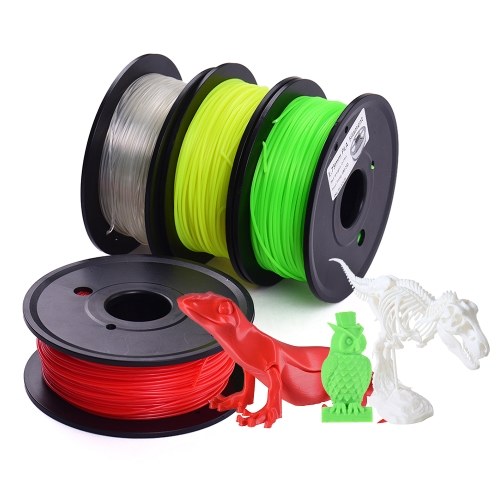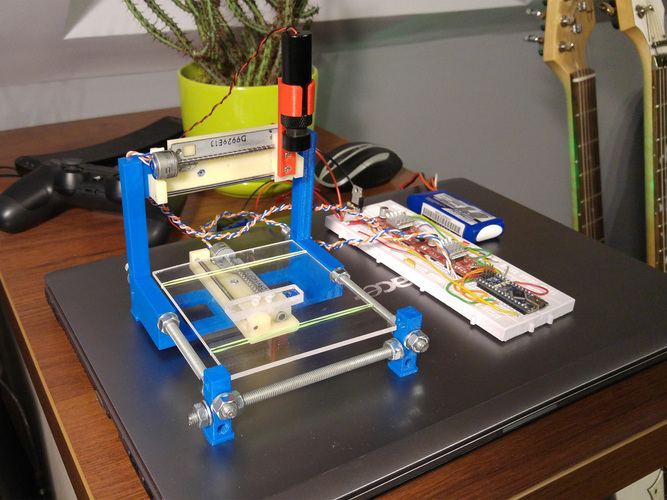3D printed guns do they work
Just How Dangerous Are 3D Printed Guns?
3D printed guns have been a subject of controversy and intense scrutiny ever since they were first conceptualized. People feared that anyone could now easily print plastic serial number-devoid “Ghost Guns,” leaving zero trace at crime scenes and spurring a new wave of criminal enterprise.
Whereas making improvised firearms once required a measure of expertise, suddenly, anybody could make a lethal, untraceable, and indetectable weapon on a $200 3D printer, all from the privacy of their own home.
However, seven years later fear has waned, with only one unconfirmed report of a murder using a 3D printed gun.
This was not due to the technology’s stagnation. Instead, despite continuous legal challenges and it’s outlawing across much of the Western world, 3D printed guns are more lethal and prolific today than they have ever been.
So, what place do 3D printed guns have in the world today?
The Controversial Beginnings of 3D Printed Guns
The first 3D printed guns were almost entirely made of plastic, with the only non-plastic elements being the ammunition and a metal firing pin.
This period’s most famous gun was Defense Distributed’s “Liberator” pistol. It became famous not only because it was the world’s first example of a working 3D printed gun, but also because Defense Distributed released the weapon’s files and building instructions online.
Suddenly, anybody with a 3D printer could bypass all forms of legal screening, and simply print their own weapons from home. These types of homemade and unregistered weapons became known as “Ghost Guns,” due to their existence being unrecorded by the government.
The Liberator could bypass metal detectors and therefore undermine existing security infrastructure, prompting intense media scrutiny at the time. Infamously, two journalists from the Israeli Channel 10 filmed themselves smuggling the pistol into the Israeli Parliament, and then into a room with Prime Minister Benjamin Netanyahu. Suddenly, no one was safe.Chanell 10 documented their Israeli Parliment Stunt
A Legal History
Defense Distributed were ordered to remove the files by the Bureau of Alcohol, Tobacco, Firearms and Explosives (ATF). Although the ATF cited arms regulations, the weakness of their stance caused speculation; chiefly, that this was a reactionary move from a government that already feared conventional ghost guns, and were just trying to bury the files as quickly as possible.
Although the ATF cited arms regulations, the weakness of their stance caused speculation; chiefly, that this was a reactionary move from a government that already feared conventional ghost guns, and were just trying to bury the files as quickly as possible.
Although Defence Distributed would bow to the ATF and remove their files, its legal battles were far from over. They immediately filed a constitutional challenge against the ATF that was only settled in 2018, and later became embroiled in other smaller lawsuits that continue into 2020.
Throughout these legal skirmishes the Liberator’s plans and files continued to circulate online through alternative file-sharing websites. They were easily accessible to anyone with an internet connection, despite the government’s best efforts.
In 2018 Defense Distributed reached a settlement, allowing them to resume hosting the 3D printed gun files online, through its companion website DEFCAD. 3D printed gun files were already circulating online, allowing them to relaunch to an established community of gunmakers who had been printing, sharing, and improving plastic gun designs since 2013.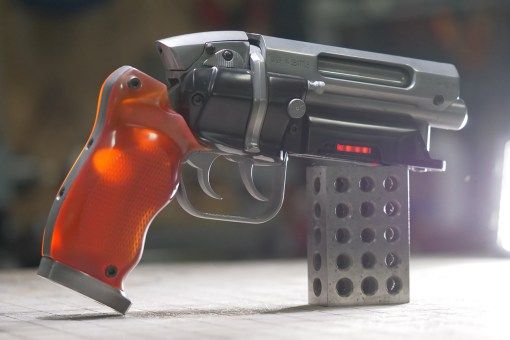
How easy is it to 3D print a gun?
The only equipment an end-user needs to print a gun is an internet connection, a 3D printer, and filament.
Price, a former limiting factor, is no longer a concern. In 2013, industrial 3D printers were needed to reliably produce 3D printed guns; however, entry-level 3D printers can now produce these firearms.
Various “Getting started” guides now exist online, produced by the 3D printed gun community. A prominent content creator, known under the pseudonym CTRL+Pew, released an updated 2020 guide, recommending the Ender 3 Pro, a 3D printer under $300 inclusive of filament and add-ons.
Considering that legally purchasing a new Glock 19 handgun can easily cost over $500, 3D printing your guns is comparatively a bargain.
This ease of access prompted much of the fear first leveled at 3D printed guns, especially because despite being made almost entirely of plastic, these guns still fire live ammunition and can absolutely kill or maim their targets.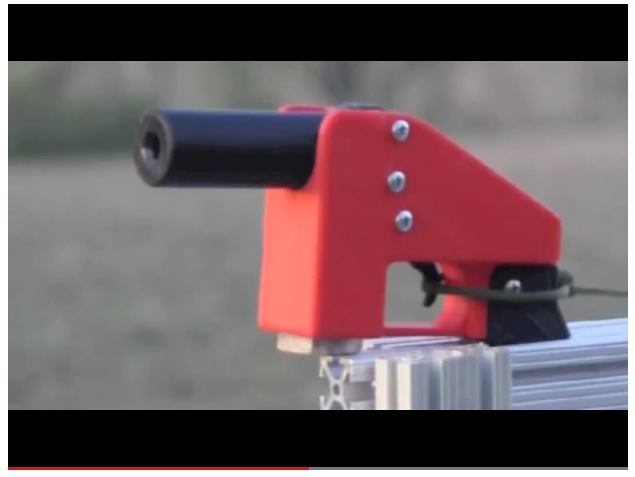
Despite this however, they have proven to be less than effective weapons.An unassembled Liberator Pistol
How lethal are plastic 3D printed guns?
Outside of personal skill, a firearm’s effectiveness depends on its reliability, accuracy, rate of fire, and power. As plastic guns use conventional ammunition, they have never suffered from low power.
However, poor overall performance could explain why plastic guns aren’t used in violent crime.
Reliability & Danger to User
Despite making them unprecedentedly accessible, their plastic construction also plagues reliability. Plastics struggle with the pressures of live ammunition, and often misfire, break, or explode in the user’s hand.
When the Liberator was released, it rarely survived more than 10 shots before exploding, with even Defence Distributed’s own prints recorded exploding on the eleventh. In the 7 years since, reliability has improved but remains a significant issue.
This explosive risk also creates safety concerns, both for the shooter and bystanders.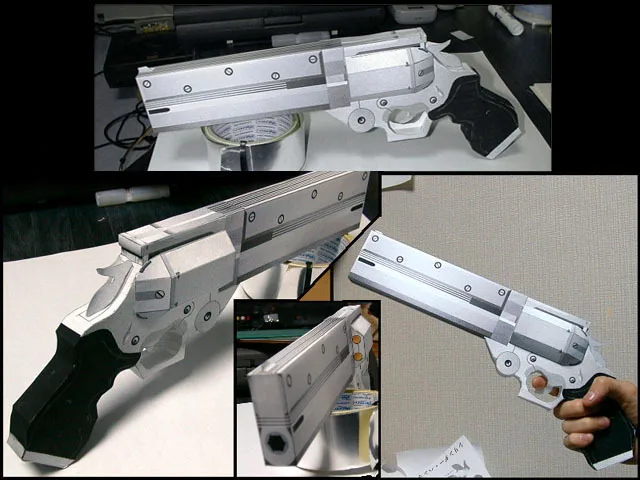 After two UK newspapers asked him to print pistols, Jonathan Rowley, design director of 3D printing specialists Digits2Widgets, responded with this warning:
After two UK newspapers asked him to print pistols, Jonathan Rowley, design director of 3D printing specialists Digits2Widgets, responded with this warning:
“Do not attempt to load and fire a 3D printed gun in which any element has been printed on a home 3D printer… We fear that the next story will be about a child blowing their hand off while experimenting with a 3D printed gun … This type of accident is the immediate danger of the project and will happen long before anyone is deliberately killed by one of these tools.”Jonathan Rowley
Practically, this means that when a user points a 3D printed gun at someone, they can’t be confident that a bullet will exit the other side with every trigger-pull, or whether they’ll blow their own fingers off.An explosive test-firing of a Liberator-style pistol
Accuracy
Reliability issues also affect accuracy. With their components being so fragile, it is difficult to print reliable long-barrelled or rifled guns. Their barrels often either warp or shatter from the heat of shooting
Additionally, fragility has made attaching sights to these weapons difficult, forcing most to go without. This reduces the accurate firing range of a 3D printed gun to either very close, or point-blank.
This reduces the accurate firing range of a 3D printed gun to either very close, or point-blank.
Rate of Fire
Fragility again prevents plastic guns from achieving automatic fire, with their components having to be simple to survive firing live ammunition. The Liberator and its contemporaries are all single-shot weapons (must be reloaded after each shot) but more modern 3D printed gun designs more closely resemble revolvers or pepperboxes, with rotating chambers or barrels respectively, allowing the user to fire multiple bullets between reloads.
The rise of revolving 3D printed guns also raises their potential lethality. Using a revolving gun, an individual can wound multiple people today in the same time it would have taken them to wound one person in 2013.
These guns were present in Britain’s first 3D printed gun related conviction. In 2019, a police raid uncovered revolver-style 3D printed guns in a students’ central-London home.
The two weapons the student was found with were the PM522 Washbear, and Reprringer pepperbox. Both are popular 3D printed guns and are easily accessible online today.A UK Police photograph of the seized Reprringer Pepperbox gun.
Both are popular 3D printed guns and are easily accessible online today.A UK Police photograph of the seized Reprringer Pepperbox gun.
Despite these advances, fully plastic 3D printed guns are still inaccurate, slow-firing, and incredibly unreliable. However, their lethality is not the only reason they are feared, the other being their undetectability.
Are plastic 3D printed guns undetectable?
Plastic 3D printed guns have raised security concerns since their inception. Being plastic means they can circumvent traditional weapon detection strategies, making them harder to trace in connection to crime.
Metal Detectors
Plastic does not set off metal-detectors, prompting concerns that plastic guns could be smuggled into airports and government buildings.
Soon after the Liberator pistol’s first successful test-firing, the then Congressman Steve Israel was interviewed on CNN to discuss legislation that would restrict the weapons:
“As we’ve just seen from that video, metal detectors may be obsolete technology now that you can make a plastic gun and bring it on a plane.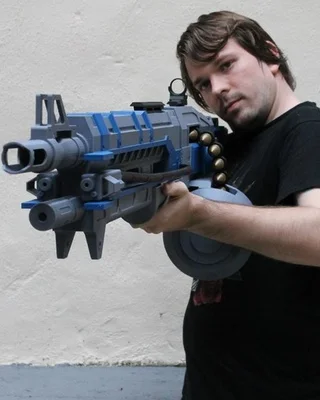 ”Congressman Steve Israel
”Congressman Steve Israel
The law in question passed – the Undetectable Firearms Act 2013 – forcing 3D printed guns to be designed with metal components.
However, these weapons could function perfectly without the included metal parts, meaning that end users could simply not install them without consequence.A Liberator pistol with its three metal components: the metal cube, firing pin, and ammunition.
Despite the legislation, whether or not fully-plastic guns will fool a metal detector is debatable. Despite their plastic construction, a metal firing pin and live ammunition are both required to function as weapons. Both of these can trigger metal detectors depending on the metal used, size, and metal detector settings.
Even when Channel 10 smuggled a Liberator into the Israeli parliament, they did so without the barrel (because it blew off during a test-firing) or ammunition, essentially turning the weapon into a harmless prop. This casts doubt as to whether their stunt would have been detected if they had used metal parts.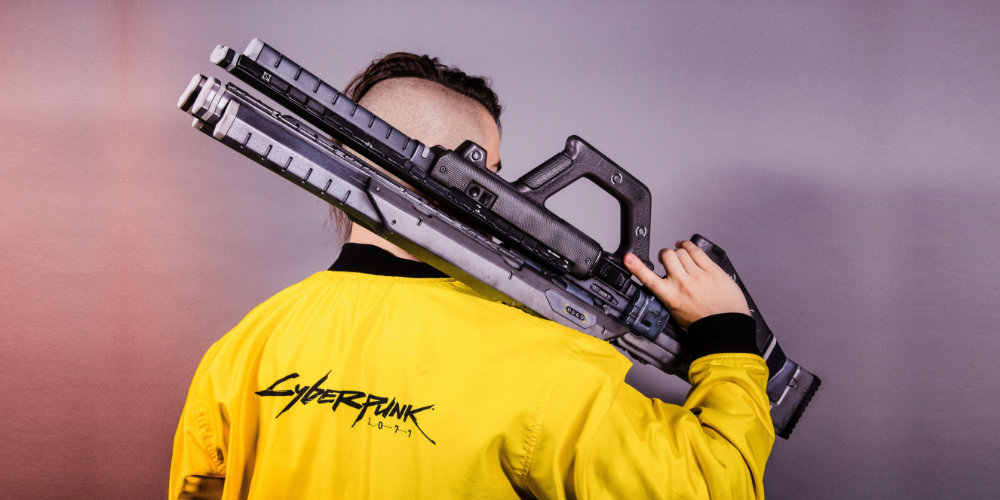
In practice, this means that while some plastic guns won’t trigger metal detectors, others will, much in the same way that some metal medical implants will trigger airport detectors, while others will not.
Physical searches
Conventional and plastic firearms will both be detected by physical searches. Pat downs, luggage searches, and x-rays will all detect these weapons. However, plastic 3D printed guns can be disguised so they do not look like a conventional weapon.
This is especially true of the early generation of 3D printed guns, as they had to be large, simple, and overbuilt to withstand the pressures of firing live ammunition. For example, when disassembled, the Liberator looks more like a pile of PVC tubing than a weapon. At worst, it looks like a children’s water gun.
This presents better disguising opportunities for plastic 3D printed guns than than metal ones, as for example the bright blue and barrel-less Liberator used by Channel 10 in Israel better resembled a stapler than a 9mm handgun.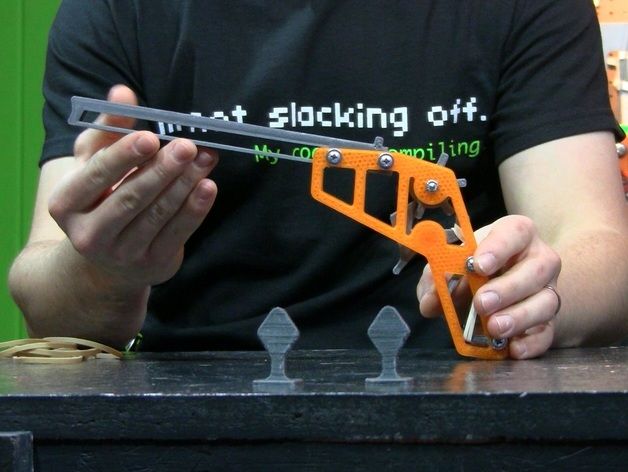 However, this doesn’t make concealing ammunition any easier, potentially explaining why they didn’t use any for their stunt.
However, this doesn’t make concealing ammunition any easier, potentially explaining why they didn’t use any for their stunt.
Detecting these disguised weapons will require further training of security personnel to identify dismantled plastic guns. However, in reality the concept of disguised weapons is not new.
Since World War II, disguised weapons have been engineered by both individuals and world-nations, with famous designs including cigarette-guns, ring-guns, pen-guns, mobile phone guns, and perhaps most famously, the “Sedgley Glove Gun,” featured in Quentin Tarantino’s 2009 film Inglorious Basterds. So, whether any new or special security adjustments would be needed is unclear.A selection of weapons detected and seized at London’s Heathrow airport in 2019, including a stun gun disguised as an iPhone.
Untraceable Crime Scenes
3D printed guns, along with all ghost guns, have no serial numbers or registration.
Usually, when a weapon is recovered at a crime scene, these details are used to find the weapon’s owner, its production, and retail journey all the way until it was used in a crime.
Detailing their process, the ATF explains that:
“Firearms tracing begins when ATF or another law enforcement agency discovers a firearm at a crime scene and wants to learn where it came from… This trace information can identify possible suspects or traffickers and link them to specific firearms found in criminal investigations. Tracing can also help detect domestic and international trafficking patterns and identify local trends in the sources and types of crime guns.”
Without these serial numbers, tracing the offending weapon’s history becomes harder. These traditional tracing systems can’t be used, restricting law enforcement to using conventional forensics and investigative techniques.Scratching off the serial number, a less than elegant way of making a Ghost Gun
Are plastic 3D printed guns really a threat?
Fully plastic guns pose a rising threat, but are currently no so than any other improvised weapon.
They are easy to obtain and fire live ammunition, but are unreliable and dangerous to the user.
They are harder to detect and trace than metal firearms, but still cannot be described as “undetectable.”
However, alternative metal designs are proving increasingly popular, and are far more reliable and dangerous.
Gun Kits and Multi-Material 3D Printed Guns
Instead of printing an entire gun on a 3D printer, an increasingly popular approach is to 3D print some of the weapon’s components, and install the rest using real weapon parts. The resulting multi-material guns overcome many of the issues associated with fully plastic guns.A PG22 Maverick V2 handgun, with additional metal parts, including steel barrel liners and rifling.
Metal Over Plastic?
The inclusion of metal components allows these weapons to be bigger, faster-firing, more accurate, and most significantly, more reliable.
Plastic 3D printed guns’ fragility prevented them from being long-barreled or rifled, relegating them to being little bigger than pistols. In comparison, by using metal components multi-material guns can be full-sized rifles, and the metal barrels won’t warp or shatter when fired.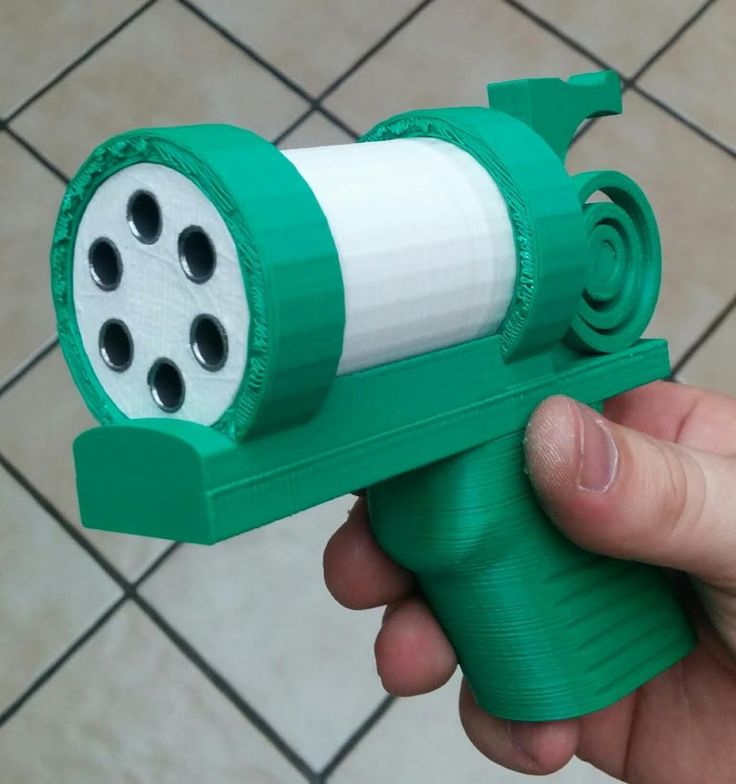 Using these metal rails also allows legitimate weapon attachments to be added onto these guns.
Using these metal rails also allows legitimate weapon attachments to be added onto these guns.
The results are weapons with more accuracy, owing to their longer barrels, and the option to use attached sights.
Additionally, the ability to use metal receivers and other action components has increased reliability, with the weapons less prone to jamming, misfiring, exploding, or otherwise failing to send bullets out of the barrel.
Well-made and modern weapons have been observed discharging more than 100 rounds without the plastic components failing. To put that into context, the Sandy Hook shooting, currently the US’s fourth deadliest shooting incident, used 156 rounds of ammunition.
Additionally, being able to use more complex components allows for both semi-automatic and fully automatic fire modes, though automatic fire significantly increases the chances of failure.
Or Plastic Over Metal?
Creating these metal 3D printed guns requires more skills and time investment.
One of the more prominent modern builders of reliable multi-material guns runs a website and YouTube channel under the name “Hoffman Tactical.”
In October 2020, he released footage of himself shooting over 100 rounds through an AR15 rifle with a 3D printed receiver. He documented the trial and error process of making the weapon, revealing that it took over 3 months of refinement before his gun was able to withstand that many shots without failing.
Though more effective than $10 plastic 3D printed guns, these guns take months to make and can cost hundreds of dollars.Hoffman Tactical shooting over 100 rounds through his AR15 rifle.
Are Multi-Material 3D Printed Guns a Security Threat?
Like plastic guns, the most concerning feature about multi-material guns is the technology’s ability to produce “Ghost Guns.” Though, they go about this in a slightly different way.
In the US, a gun’s receiver has a serial number and is documented. Any part except the receiver can be purchased without any form of screening or registration.
Even before the rise of 3D printing, “gun kits,” that contain everything needed to make a firearm minus a receiver, have been readily available. The user then either makes their own receiver, or purchases an incomplete “80%” receiver and finishes the work.
3D printing’s involvement has made this process more accessible, lowering the skills required to print these receivers, and ultimately allowing anybody to make an unregistered, 100-plus round capable gun.An AR15 rifle with a 3D printed “lower” reciever.
How Dangerous are Multi-Material Guns?
Multi-material guns are significantly more effective weapons than plastic guns on all fronts, but are still dismissed as being too unreliable when compared to other improvised weapons. They still fail frequently, with users never entirely certain that a bullet will exit the barrel with each trigger pull.
Despite all of the advances 3D printing has brought to the homemade gun world, the future of homemade guns appears to lay not with 3D printing, but with another increasingly affordable technology that promises to address all of the current weapon’s shortcomings.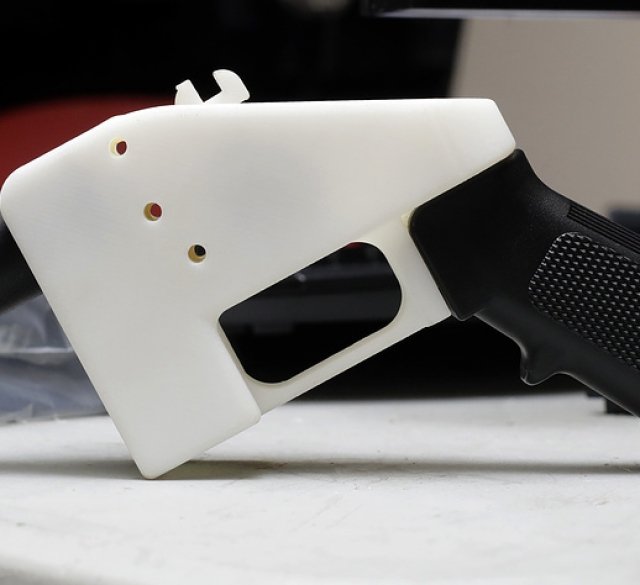
CNC Milled Guns
Computer numerical control (CNC) milling machines function in a similar fashion to 3D printing. CNC differs in that rather than adding layers of material to create an object, it instead removes material. In this case, CNC machines remove material from an aluminum workpiece to form the gun component.
The technology’s real value is its ability to produce metal firearm receivers. As mentioned above, manually finishing a receiver takes time and skill to complete accurately. While 3D printed receivers are proven to work well, they ultimately face reliability issues. CNC milled receivers solve both issues, with the end-user only needing to manually attach a gun kit’s components to an accurately and automatically milled metal receiver.
The resulting fully-metal gun is just as dangerous as standard guns, and can be made by someone without much CNC experience.Andy Greenberg, a senior writer for WIRED magazine, holds his CNC milled AR15 rifle
The barrier to entry was initially limited by cost, with CNC mills in 2013 capable of gun production costing thousands of dollars, rather than hundreds.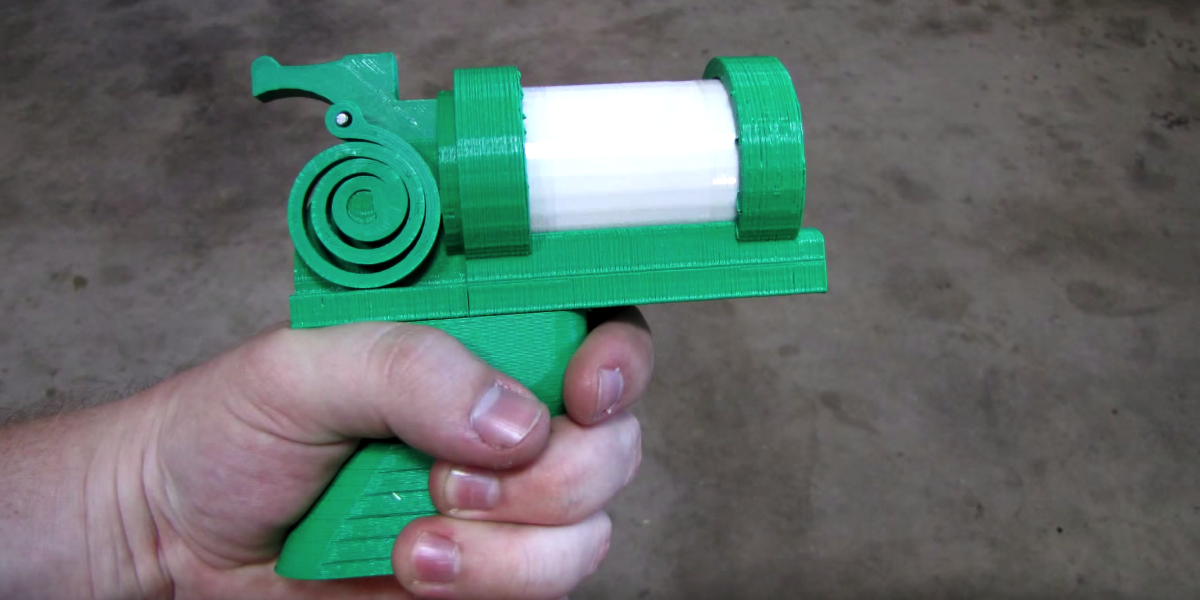 However, efforts by Defense Distributed have seen even that barrier drop to an unprecedented low.
However, efforts by Defense Distributed have seen even that barrier drop to an unprecedented low.
Ghost Gunner
The Ghost Gunner is a CNC machine designed by Defense Distributed specifically to make printing gun receivers cheap and easy. They are currently selling their third generation model, the Ghost Gunner 3, for $2,100. It is capable of milling various receivers ready to be assembled into weapons, including the AR-15 rifle, AR-308 rifle, and M1911 pistol.The Ghost Gunner 3 by Defense Distributed.
What place does 3D printed guns have in the world today?
The fear that 3D printing would be used by criminals to print lethal weapons was tempered in the face of the first generation of fragile and failure-prone pistols.
But the technology has quietly innovated over the past 7 years. Today, individuals can now affordably, quickly, privately, and with no existing skill, build a weapon that performs indiscernibly from one purchased legitimately. And all without any form of official screening – so long as they can legally buy gun kits.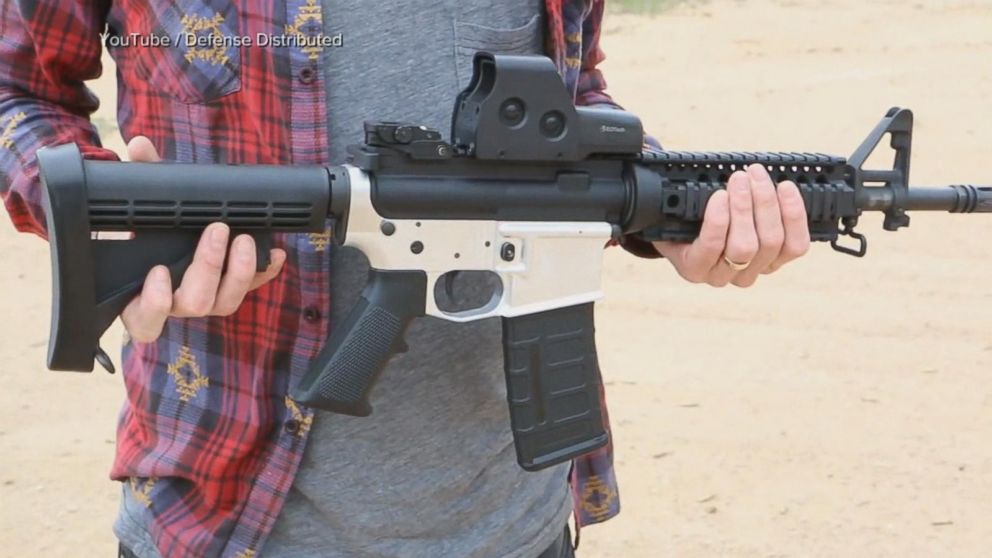
Perhaps ironically, the concerns originally raised in 2013 have now become reality, though to far less fanfare.
I began this article by theorizing that a lack of involvement in crime caused the spotlight on these weapons to fade, with their place in the world seemingly playing second fiddle to more conventional homemade weapons.
However, with current 3D printed and CNC milled weapons performing so effectively, and the barrier to entry lower than ever, it would be far from surprising if that status quo soon changes.
How 3-D Printed Guns Work
- Eight states announced on Monday that they were suing the Trump administration over giving the public access to blueprints for 3-D printed guns.
- The guns do not have serial numbers, people printing them would not have to undergo background checks, and the weapons would virtually be untraceable.
Concern over the rise of 3-D-printed guns has hit a climax as eight states announced on Monday that they were suing the Trump administration for allowing the public to download blueprints for such products.
The move would allow the public access to working guns that can fire real bullets, potentially including AR-15 semi-automatic assault rifles.
Because the guns can be printed at home, they do not have serial numbers, people printing them would not have to undergo background checks, and the weapons would virtually be untraceable.
As of Wednesday, Texas-based Defense Distributed will be able to post blueprints for a variety of guns, including its most common, "The Liberator," as well as an AR-15 semi-automatic assault rifle, a Beretta M9 and other firearms.
The weapons are printed in pieces through a 3-D printer, and the user then assembles the gun him or herself.
The only metal on the gun is the firing pin and the bullet itself. Some plastic guns can evade metal detectors, with only the small firing pin and a piece of steel put in to comply with the Undetectable Firearms Act, CBC News reported.
Each gun is reusable and fires a different number of rounds, depending on the type of firearm made with the 3-D printer.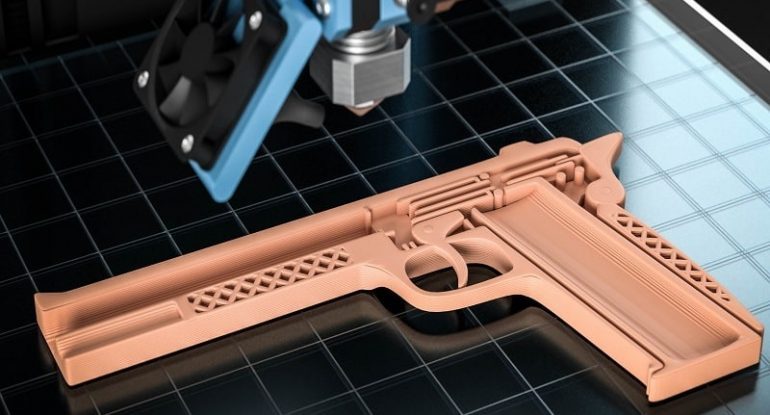
3-D-printed guns aren't as durable as traditional guns, and many shooting ranges ban them from being used.
Defense Distributed's "The Liberator" has been known to break after one discharge, but founder Cody Wilson has been working to strengthen the gun design.
Cody Wilson, the founder of Defense Distributed, shows off a magazine he 3-D-printed for an assault rifle in 2013. Wilson's company is the subject of Monday's lawsuit. Defense Distributed via YouTube
"There are a few types of guns that can be made on 3-D printers now, although none of them are reliable or have any type of substantial commercial quality that you might expect in a real gun," Wilson told Newsy.
He added: "It doesn't take a ton of knowledge or expertise. It might take a lot of patience."
The Bureau of Alcohol, Tobacco, Firearms and Explosives made a report on The Liberator and other 3-D-printed guns public in 2013, CNN reported.
At the time, ATF Firearms Technology chief Earl Griffith called The Liberator a "lethal weapon."
Officials said a gun made of the plastic ABS-M30, which is often used in toys, fired a .380-caliber round without failing eight times in a row.
The bullet traveled eight to 11 inches into a piece of gelatin made to simulate human soft tissue. A commercially available .380 pistol fired a similar round that traveled 18 inches into the gelatin.
Another plastic-made gun, however, called the VisiJet, exploded into shards when it was fired, according to the report, analyzed by CNN.
And German tests of 3-D-printed guns show weapons made out of plastic PLA materials could bend or deform after firing.
When a "mostly" 3-D-printed semi-automatic gun was created in 2016, its creator, a middle-aged man from West Virginia who went by the pseudonym Derwood, said he had to use some metal to complete it.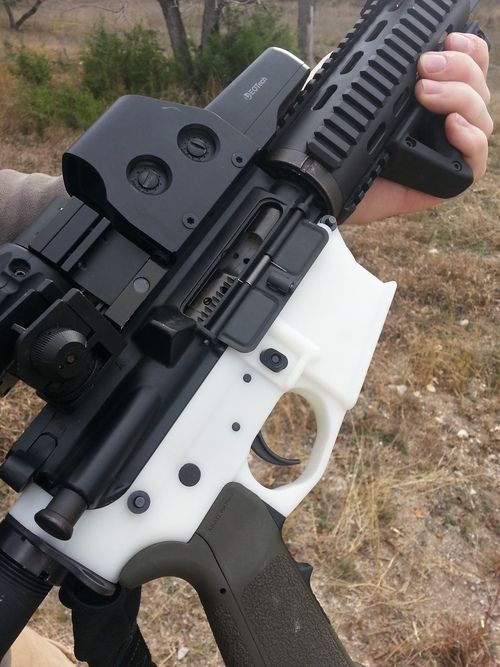
The gun's barrel began to melt after about 18 shots if it wasn't allowed to cool before firing, according to Wired. In total, he said he fired more than 800 rounds.
Blueprints for 3-D-printed firearms could be available soon — without a background check, proof of age, or licenseA government settlement with Defense Distributed last month allowed the Texas-based company to make plans for 3-D printed guns available online, years after it was ordered to cease operation on such blueprints.
Defense Distributed founder Wilson first published downloadable designs for a 3-D printed firearm in 2013, and they were downloaded approximately 100,000 times, according to the Associated Press, before being shut down.
He sued over the shut-down in 2015, and the State Department settled in June.
As early as Wednesday, Wilson's company could be allowed to republish blueprints, allowing Americans to again download untraceable plans for 3-D guns.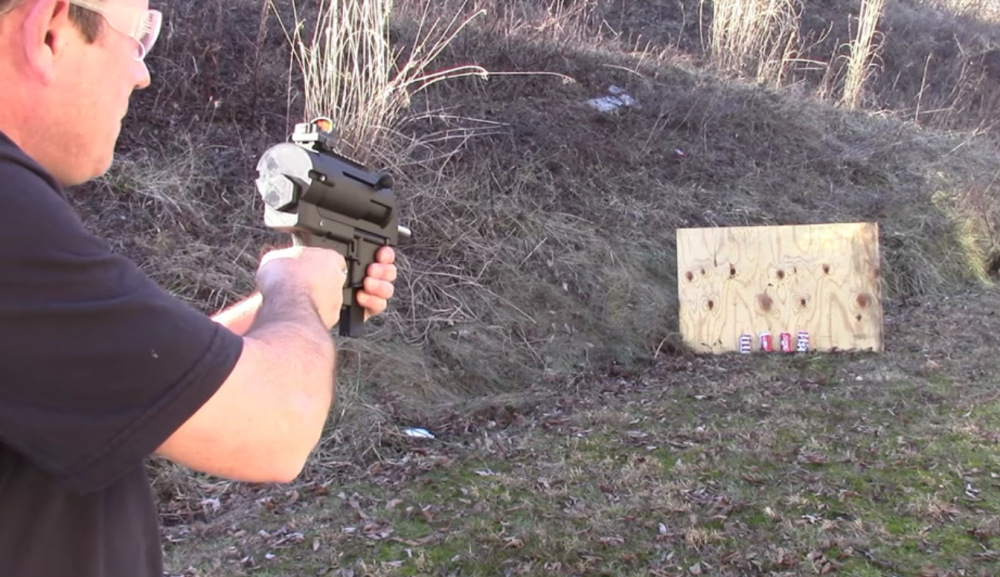
A lawsuit filed by several states asking the Trump administration to stop the blueprints from being available says that anyone can become a member of Defense Distributed without a background check, according to US News and Report.
Defense Distributed doesn't to ask for a proof of age or a valid permit or gun license, making it easy to surpass what a customer might go through when buying a gun at a store.
Access to 3-D printers is still a hurdle3-D-printed guns are printed in several plastic parts that the user has to assemble on his or her own. Wilson said it takes about 24 hours to create a pistol.
Although DIY kits for making at-home guns have long been available online, blueprints would allow easier access to anyone with a 3-D printer.
Gun experts claim, however, that criminals are still unlikely to use the blueprints because 3-D printers are still fairly expensive and the guns deteriorate more quickly than traditional firearms, TIME reported.
Printers needed to make the guns cost anywhere between $5,000 and $600,000.
Although 3-D printing is available in most public libraries, many have banned the machines from being used for unsafe or dangerous reasons, according to WJHG.
Users on Defense Distributed, who only need to pay a fee and include an email, username and password to register, can also share their own designs for guns, magazines and accessories, CNN reported.
3D Printer Pistols are Back and Unstoppable / Sudo Null IT News They anonymously share drawings, tips, and create their own community. And there is no easy way to stop them.
In the United States, a network of supporters of printing weapons on a 3D printer is growing again - but now everything is different. Unlike previous attempts to popularize weapons that can be printed on a 3D printer, this operation is completely decentralized. It has no headquarters, no trademarks and no leader. And the people behind it believe that this state of affairs guarantees the inability of governments to stop them.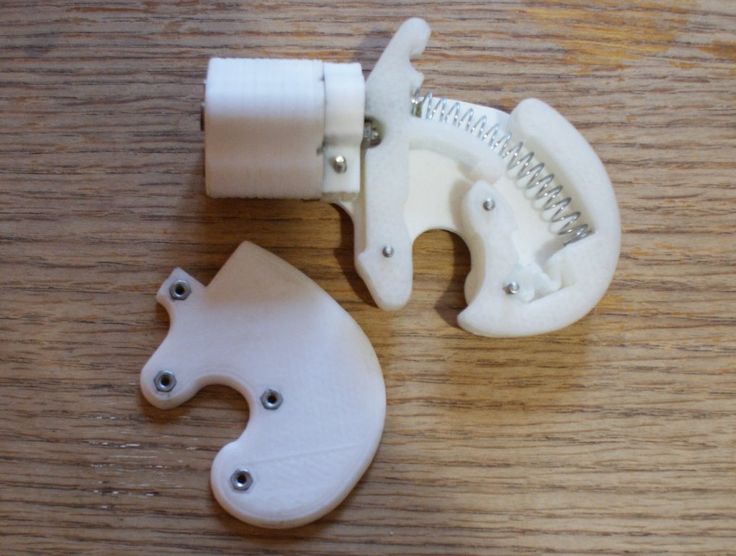
“If they want to come after me, they'll have to find me first,” says Ivan the Troll, a member of the group. “I am one of many like-minded people doing this work.”
The troll Ivan is known only by his network pseudonym, and is the de facto representative of an underground organization of gunsmiths working on 3D printers. Ivan says he knows at least 100 people actively developing weapon 3D printing technology, and claims that thousands of people are involved in the network. And this loosely connected network spans the entire world.
They communicate on different digital platforms - Signal, Twitter, IRC and Discord. They critique each other's work, trade weapon CAD files, give advice, talk theory, and collaborate on new blueprints. Enthusiasts of unsealed weapons - who share similar ideas and political views on gun control - mainly meet on subreddits and forums dedicated to this topic.
Ivan himself is only a small part of this network. He says he comes from Illinois and is about the age of a "college student," but otherwise keeps quiet about himself to keep his head down.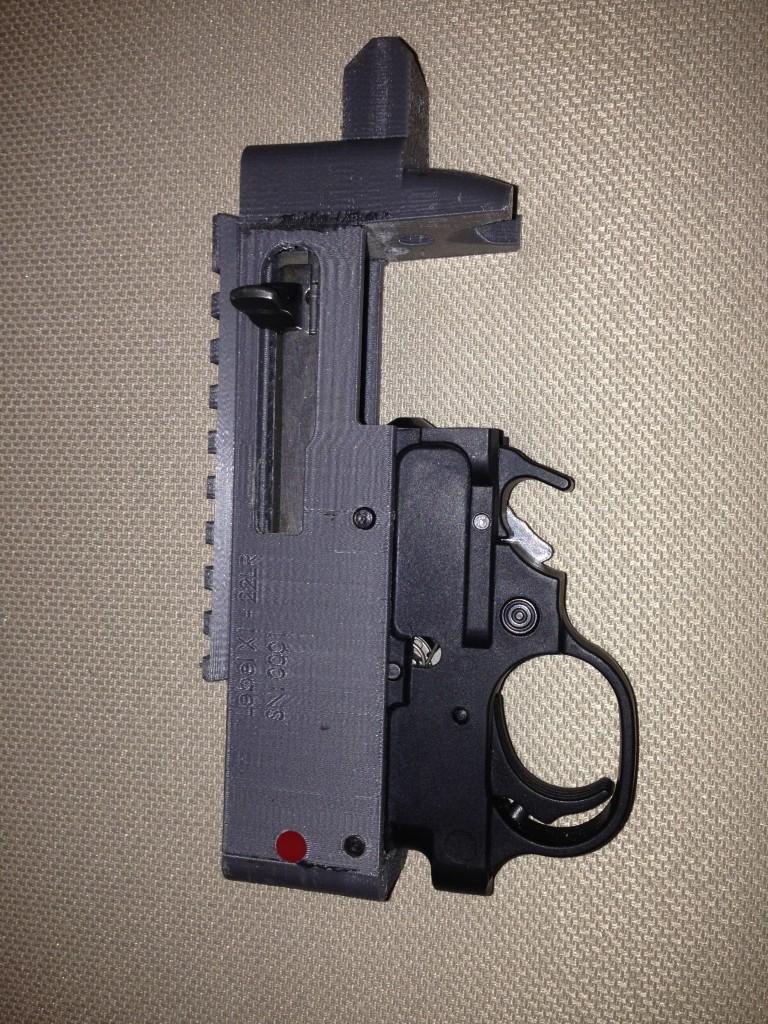 In doing so, he launched some amazing commercials showing off new handgun parts he printed out in his garage, including the Glock 17 pistol frame.0006
In doing so, he launched some amazing commercials showing off new handgun parts he printed out in his garage, including the Glock 17 pistol frame.0006
On the last video [ , the video is deleted from YouTube, but the videos can be found on other hostings / approx. transl. ] shows the Glock 17 resin frame in various stages of production in the workshop. The footage is sounded with fast synthwave music, and passed through a VHS filter for greater aesthetics. By the end of the video, Ivan fires several shots from a ready-made pistol, and the captions that appear at the same time read: "Anyone can do this", "Live free or die", "Let's try to stop this, you dirty etatists." He also uploaded a complete CAD model of the AR-15 assault rifle to a file sharing site. It is clear that Ivan is trying to provoke his detractors to the maximum.
In February of this year, Ivan and his group decided to call themselves "Distributed Deterrence" transl. ], which is an allusion to the name of the company Defense Distributed [distributed protection], which was previously headed by Texas crypto-anarchist Cody Wilson.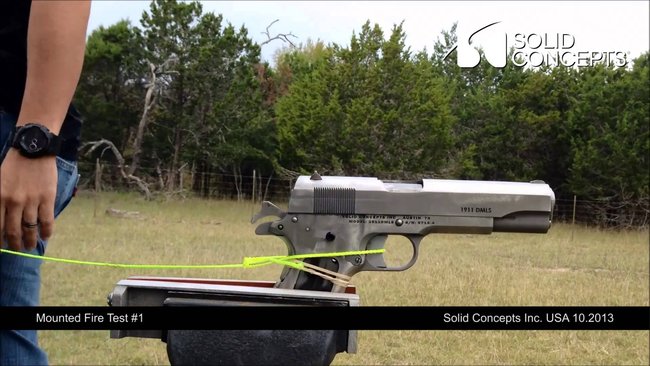
In September 2018, Wilson, aged 30, was arrested and charged with sexually abusing a minor. He allegedly paid $500 for sex with a 16-year-old girl in his hometown of Austin, Texas. Naturally, this arrest took Wilson completely out of the world of 3D printed guns. Many of the people who admired him were either disgusted or realized that his time had passed. He retired from Defense Distributed, which used to be the main driver behind 3D weapon printing, since its inception in 2012. Wilson was released on $150,000 bail, but hasn't been in touch since.
Defense Distributed has many other legal issues. Attorneys in more than 20 US states are currently suing the company - which has filed counterclaims - in an attempt to undo the company's win in court that allowed the company to upload and share 3D weapon blueprints online. All these processes are long and tedious (New York State just passed a law to ban 3D printed weapons).
But for Ivan's group, Deterrence Dispensed, none of that matters.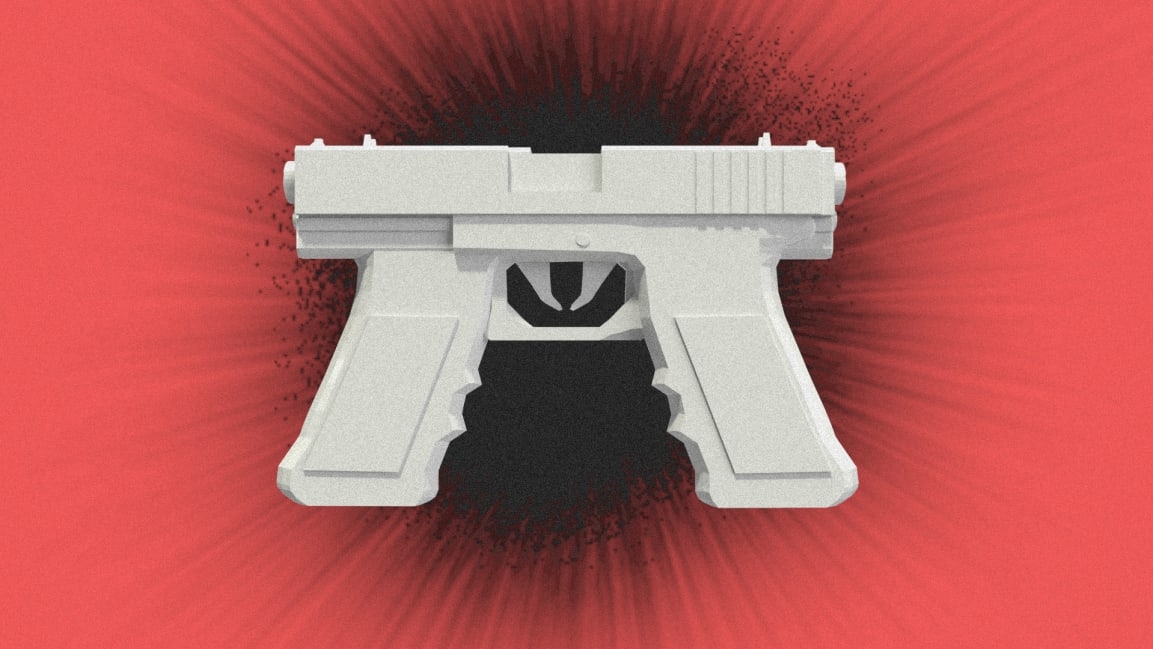 They upload their files singly to services like Spee.ch, a media hosting site powered by the LBRY blockchain, without waiting for anyone's permission. They themselves make blueprints for printing weapons, tweak old ones, and distribute all blueprints from Defense Distributed for free.
They upload their files singly to services like Spee.ch, a media hosting site powered by the LBRY blockchain, without waiting for anyone's permission. They themselves make blueprints for printing weapons, tweak old ones, and distribute all blueprints from Defense Distributed for free.
“Even if no government forbade me to do this, I think I would still do it,” says Ivan. “Some people enjoy video games, but I like to spend time drawing things in CAD.”
But Ivan doesn't just "draw things" in CAD. He's giving away files for free to help anyone with a decent Fused Deposition Modeling (FDM) 3D printer and certain tools build a working gun. Once the CAD file is downloaded, it is opened in a slicing program that translates the CAD files into instructions that the 3D printer can understand. After the parts are ready, they can be assembled, getting a fully working weapon.
The blueprints that Deterrence Dispensed shares with the world are so good, according to Ivan, that they are not just "working", they are of excellent quality.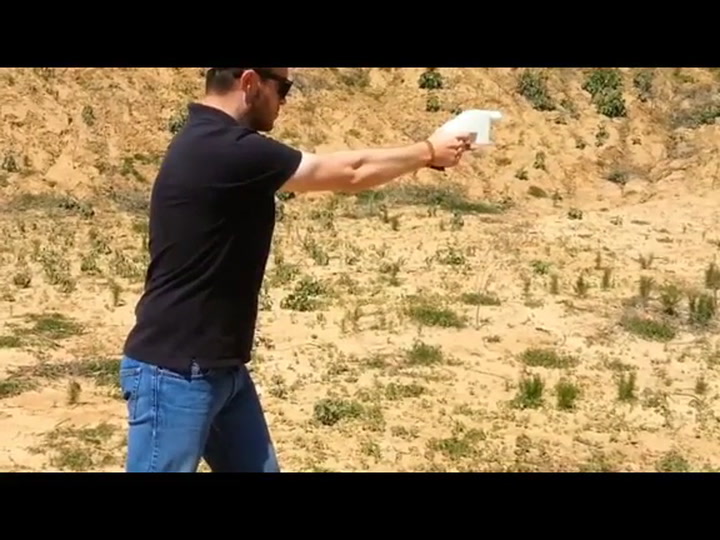 “Our AR15 model is the best available to the public without a doubt,” says Ivan.
“Our AR15 model is the best available to the public without a doubt,” says Ivan.
Despite active antagonism with the authorities, Ivan has had no problems with them so far. His Twitter account was permanently shut down by Senator Bob Menendez of New Jersey, but so far, from the point of view of law enforcement and government, all has been quiet.
Ivan considers himself and other radical gun printing groups like FOSSCAD to be hobbyists who want to do something “wrong”. He believes that the problems of 3D printing weapons are overblown. He points out that while printable gun parts can be used to kill people, homemade guns have always existed and are probably more lethal. From his point of view, all this hysteria and backlash is directed to the wrong address.
"Trust me as a gun maker. A semi-automatic shotgun is 100 times easier, faster and cheaper to make than a regular pistol. I can go to Home Depot and buy a shotgun for $8."
In 2019, 156 people have already died in mass shootings in the United States, and in principle, the number of deaths related to weapons is a 20-year high. In March, a terrorist armed with two semi-automatic rifles and two shotguns killed 51 Muslims in Christchurch, New Zealand. Does the US (and the rest of the world) need more weapons in these circumstances, homemade, printed or otherwise? Ivan thinks so.
In March, a terrorist armed with two semi-automatic rifles and two shotguns killed 51 Muslims in Christchurch, New Zealand. Does the US (and the rest of the world) need more weapons in these circumstances, homemade, printed or otherwise? Ivan thinks so.
“The police killed more people last year than were killed in all the mass shootings in the last 10 years,” he says. “We live in a society in America where there is always the risk that a cop will shoot your ass off for nothing. And you don't even have to pose a threat to him. A cop can kill you just because he wants to, and he can get away with it."
He cited numerous examples of policemen shooting at unarmed black Americans, with particular reference to Steven Clark. Clark, 22, was gunned down by police in his garden with only his cell phone in hand. “I think it’s extremely important that everyone has the opportunity to have a gun,” Ivan continued. “Everyone should have the same legal options as the cops using them to control you. ”
”
However, the facts are undeniable. Slightly more than half of deaths from firearms occur in six countries, incl. in the USA. And analysis from Harvard University shows that the more guns there are, the more murders there are.
Opponents of weapons, of course, are not satisfied with the concept of a downloadable pistol. Avery Gardiner, one of the presidents of the Brady Campaign, said that 3D-printed weapons "pose the greatest threat to our security." Following the court ruling in August, Gardiner said, "There is already a wave of dangerous individuals trying to illegally post blueprints on the Internet."
Members of this decentralized 3D printed weapon society are often motivated by a mixture of libertarian views and the pleasure of designing and creating tangible items as a hobby. They upload drawings to the Internet, share them, improve diagrams and make it easier to print, while remaining out of sight. Ivan states that he does this for the love of freedom and radical adherence to the first two amendments to the US Constitution: freedom of speech and freedom to bear arms.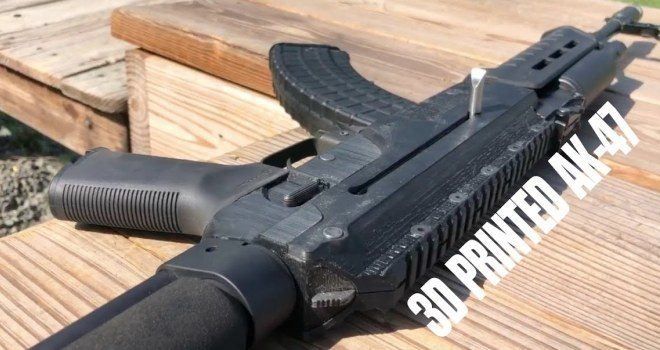
However, his radicality goes as far as to talk about the right to have his own Tomahawk-class missiles, saying that they would be safer in his hands than in the hands of the US Army and its allies - given the history of accidental killing of civilians by the military, including a wedding in Afghanistan and a school bus in Yemen.
Describing the growing list of civilians who died at the hands of the US military in foreign wars, Ivan often comes across as more of a radical leftist than the right-wing gun fanatic that many think he is. However, he rejects any particular ideology, saying, "I myself am special and unique."
So far, Troll Ivan, Deterrence Dispensed and thousands of 3D weapon printing enthusiasts, united by a worldwide network, have let the genie out of the bottle. Unable to stop anonymous file sharing for weapon 3D printing. Whether they are hiding behind freedom in the process or not, one thing is clear: it is too late to stop them.
Is it possible to print airguns and firearms
Is it possible to make a gun on a 3D printer and is it legal?
Today's 3D printers offer enormous possibilities. They can print products of almost any complexity. Until quite recently, it was difficult to even imagine that a plastic weapon could shoot. However, it is already possible to make a pistol on a 3D printer, which, although not reliable, still fires live ammunition.
They can print products of almost any complexity. Until quite recently, it was difficult to even imagine that a plastic weapon could shoot. However, it is already possible to make a pistol on a 3D printer, which, although not reliable, still fires live ammunition.
Can firearms be 3D printed?
Back in 2013, a young American activist for the free sale and distribution of weapons proved that plastic weapons can be printed on a 3D printer. He was the first in the world to make a pistol in this way, in which only the striker was made separately from metal. All other parts were printed on an FDM printer.
Today's 3D printers are capable of printing any CAD model, and these models of firearms have been available for over 10 years. If in previous years their printing required professional skills, now almost any user can master them. With a 3D printer and a finished model, it became quite possible to print a gun. Another thing is that such "creativity" is punishable by the laws of most countries.
The evolution of 3D printed weapons
Despite all the prohibitions and restrictions, the evolution of 3D printed firearms is moving at a great speed. The beginning was laid by the single-shot plastic pistol Liberator by American K. Wilson, which appeared in 2013. It had a simple design and was chambered for 380 ACP. Already after 10-12 shots, this weapon fell into disrepair. However, the very possibility of printing firearms served as an impetus for the development of the idea. The author of the first pistol himself founded the Defense Distributed company, which began to actively improve the technology.
One of the ways to increase the durability of weapons was to increase the number of their barrels. At the beginning of 2014, the Japanese Y. Imura makes a 38 caliber Zig Zag pistol. He was able to fire up to 6 shots non-stop. The author of the weapon was recognized as a criminal and convicted.
The next step was the production of a six-shot revolver by J. Patrick in 2015. The PM522 Washbear has been shown in action on YouTube. The weapon was noticeably safer for the shooter compared to previous versions, but still allowed to fire only a few dozen rounds.
Patrick in 2015. The PM522 Washbear has been shown in action on YouTube. The weapon was noticeably safer for the shooter compared to previous versions, but still allowed to fire only a few dozen rounds.
The first 9mm semi-automatic pistol appeared in 2016 under the name Shuty-MP1. It was developed by a handicraft gunsmith who hid under the pseudonym Derwood. It wasn't exactly a plastic weapon. The author used some metal parts from factory pistols - a barrel, a firing pin, a bolt and several springs. This made it possible to ensure a rate of fire of more than 46 rounds / min. However, when changing the store, the plastic case had to be cooled. In 2017, the same master proposed an improved model - Shuty AP-9.
The main contribution to the development of 3D printed weapons technology was made by Defense Distributed, which brought together a group of like-minded activists. First, these enthusiasts won legal proceedings in the United States and obtained permission to 3D-print weapons, which greatly expanded their capabilities.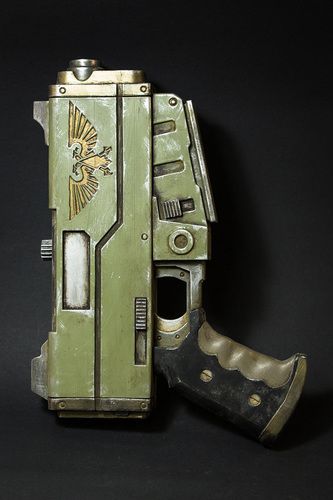 Secondly, they were able to organize a professional business with product testing and quality control. As a result, in 2018–19 they developed numerous models of a variety of firearms - from pistols to carbines. They posted over 30 files for printing original gun parts. Most of them were plastic, and the metal parts were not made from purchased, ready-made elements, but from simple metal profiles (tubes, strips, etc.), which are sold in ordinary hardware stores. This made it possible to exclude the use of parts patented by gunsmiths.
Secondly, they were able to organize a professional business with product testing and quality control. As a result, in 2018–19 they developed numerous models of a variety of firearms - from pistols to carbines. They posted over 30 files for printing original gun parts. Most of them were plastic, and the metal parts were not made from purchased, ready-made elements, but from simple metal profiles (tubes, strips, etc.), which are sold in ordinary hardware stores. This made it possible to exclude the use of parts patented by gunsmiths.
At the moment, the semi-automatic carbine FGC-9, developed on the basis of the Shuty AP-9, has become the pinnacle of "creativity" of Defense Distributed. At the same time, there is not a single factory part in it. The barrel for the 9 mm cartridge is made of steel pipe using electrochemical processing.
Where can I get drawings and what should I look for?
Gun manufacturing bans make it much more difficult to access blueprints and models of guns for 3D printing. The right to free placement of information was achieved only by Defense Distributed. Their website provides free access to drawings, models and technologies. Other information can be found on the Internet, but they are usually illegal.
The right to free placement of information was achieved only by Defense Distributed. Their website provides free access to drawings, models and technologies. Other information can be found on the Internet, but they are usually illegal.
When choosing a model, pay attention to the following information:
- material used;
- cartridge for which the model is designed;
- number of cartridges in the magazine, rate of fire;
- duration of operation before failure.
It is important to clarify which metal parts will need to be purchased separately, in addition to plastic for printing on a printer.
What does the law say in different countries?
The only country where firearms can be 3D printed is the United States. Gun Control Act 19 applies here68, giving Americans the right to make weapons, but only for personal use. Only one limitation is put forward: it must be determined by metal detectors, that is, it must have a metal element.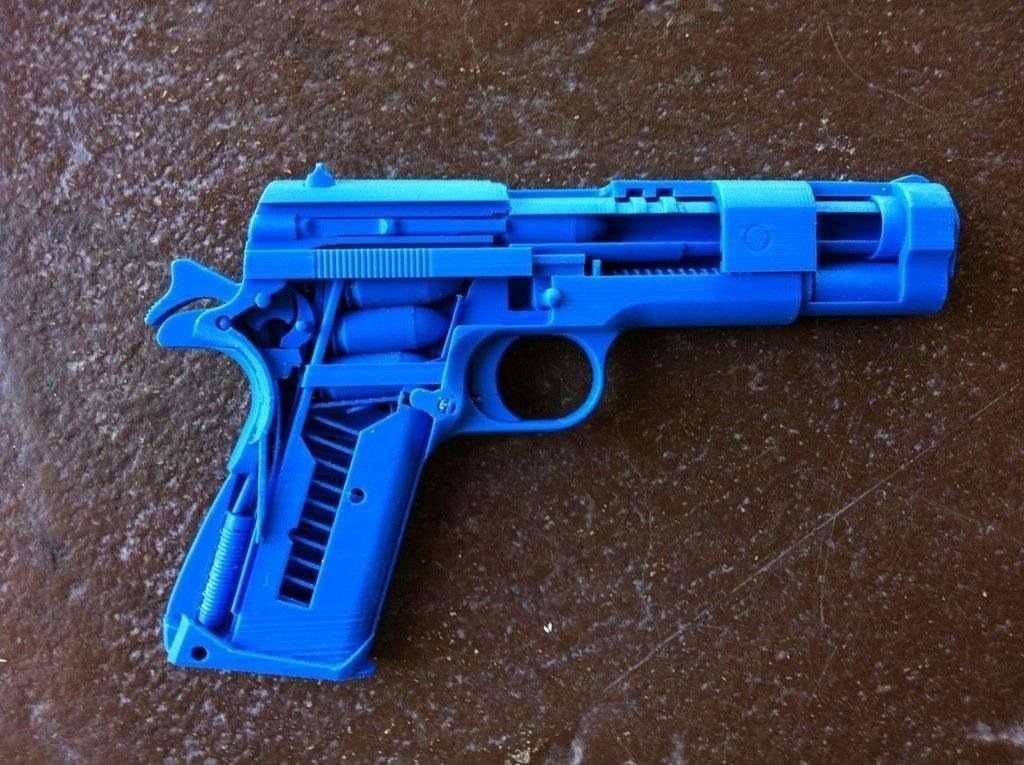 In virtually all other countries, homemade manufacture and repair of weapons for any purpose is prohibited by law. In Russia, printing it on a 3D printer falls under the Criminal Code of the Russian Federation and is punishable by imprisonment.
In virtually all other countries, homemade manufacture and repair of weapons for any purpose is prohibited by law. In Russia, printing it on a 3D printer falls under the Criminal Code of the Russian Federation and is punishable by imprisonment.
Should we be afraid of plastic weapons?
The question of how dangerous a weapon printed on a printer is becoming increasingly important. Despite all the prohibitions, it is extremely difficult to control the spread of technology around the world. The availability of 3D printers and the increase in their functionality make it possible to master the production of plastic guns at home. How dangerous is such a weapon?
Most experts agree that currently printed weapons are more of an interesting toy. It is quite expensive and is designed to carry out only a few dozen shots. Moreover, such pistols are quite dangerous for the shooter himself with live ammunition, because they can explode in their hands.
However, the danger cannot be underestimated.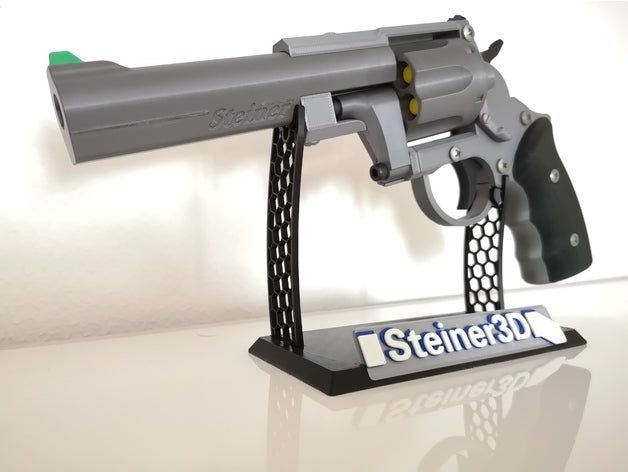 It is easier and cheaper for a "serious" criminal to buy illegal military weapons than to make them on a printer. At the same time, there may be "enthusiasts" who, for their own interest, can make a pistol and try it out in action. Such inadequate people represent an undoubted danger. In addition, the temptation is great for terrorists. Metal detectors do not detect a plastic gun, which means that it is easier to carry it, for example, on an airplane.
It is easier and cheaper for a "serious" criminal to buy illegal military weapons than to make them on a printer. At the same time, there may be "enthusiasts" who, for their own interest, can make a pistol and try it out in action. Such inadequate people represent an undoubted danger. In addition, the temptation is great for terrorists. Metal detectors do not detect a plastic gun, which means that it is easier to carry it, for example, on an airplane.
Important! Plastic weapons have a very small resource. At the same time, sometimes just one shot is enough to kill a person.
3D printed firearms have the following advantages:
- the ability to make military weapons at home;
- light weight;
- availability of materials;
- ability to copy famous weapon models.
Always remember that there are significant disadvantages:
- illegal manufacture;
- high cost of weapons;
- very small resource and limited rate of fire;
- danger to the shooter himself.

Currently, plastic weapons have more disadvantages than advantages, and most importantly, you can get a real prison term for making them.
Prospects for printing weapons
The potential for 3D printing of firearms is far from exhausted. The expansion of equipment capabilities and the development of innovative materials indicate that in the near future such weapons may approach military weapons in terms of characteristics. In the future - a significant increase in the resource and the provision of automatic firing.
Significantly increases the reliability of printed pistols and carbines SLS technology using metal powder. Such weapons already differ little from the factory metal models. While it is very expensive, which significantly limits the application. However, over time, the material will become cheaper, which means it will become more affordable.
Printing firearms on a 3D printer has become a reality. Despite its extremely low performance and reliability, interest is growing in it.